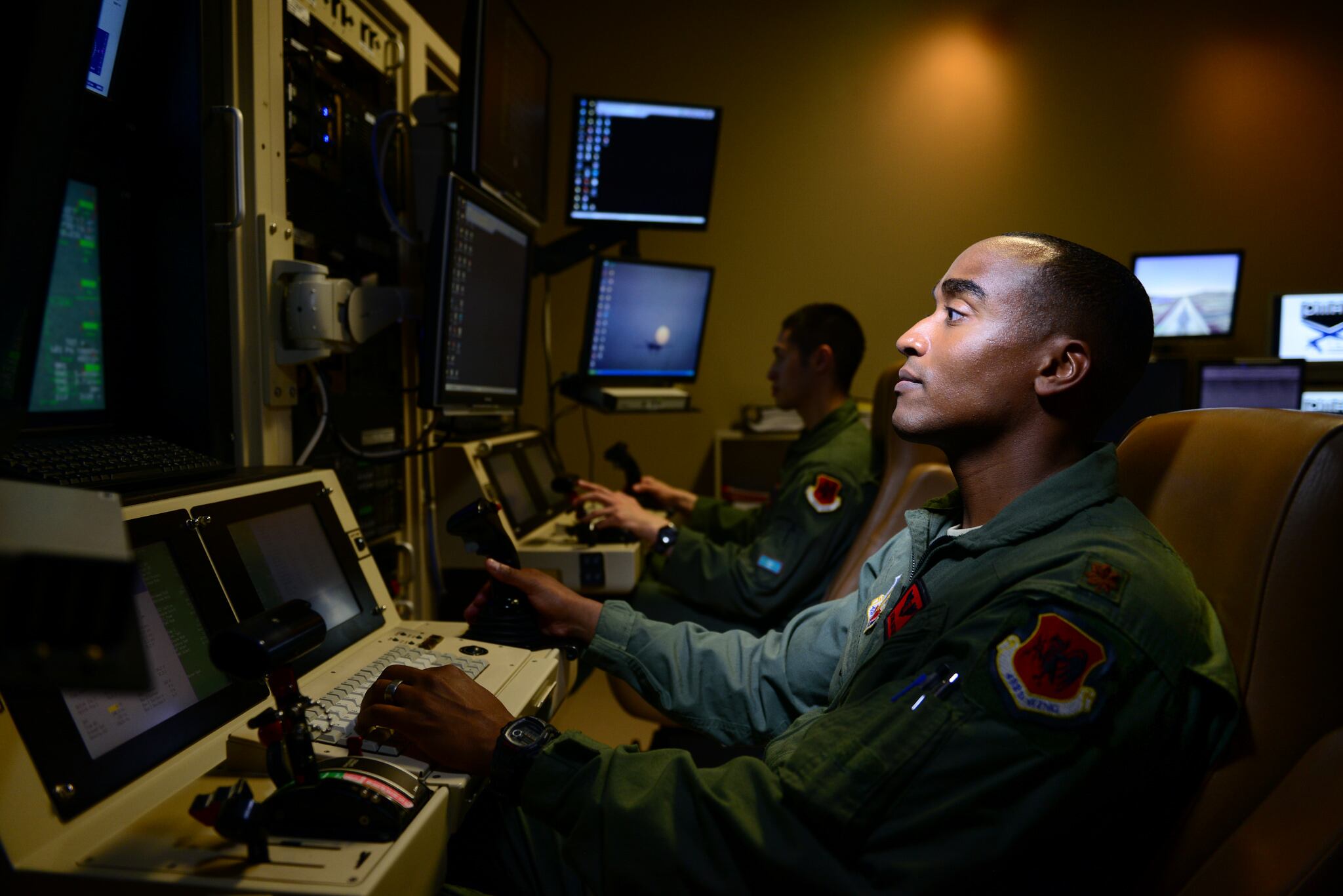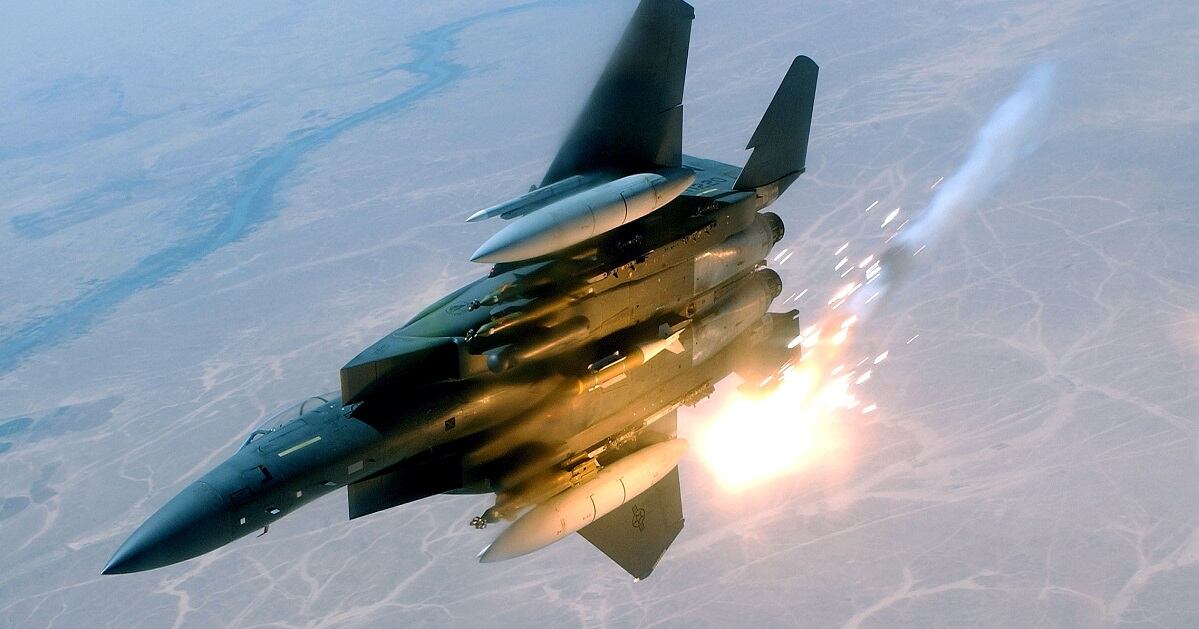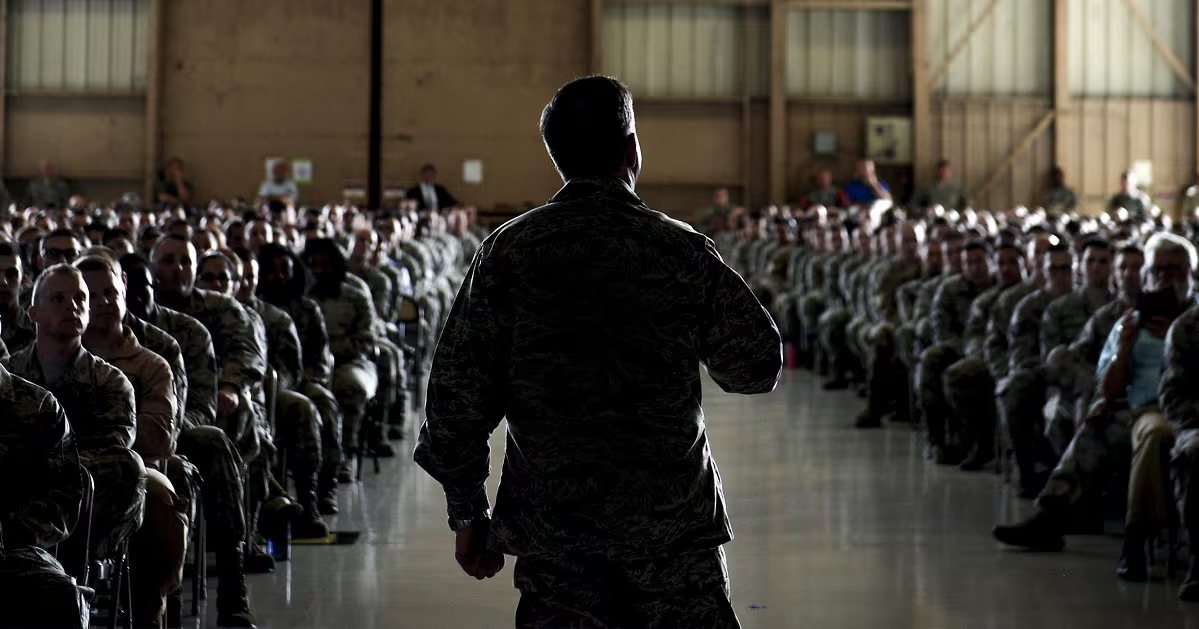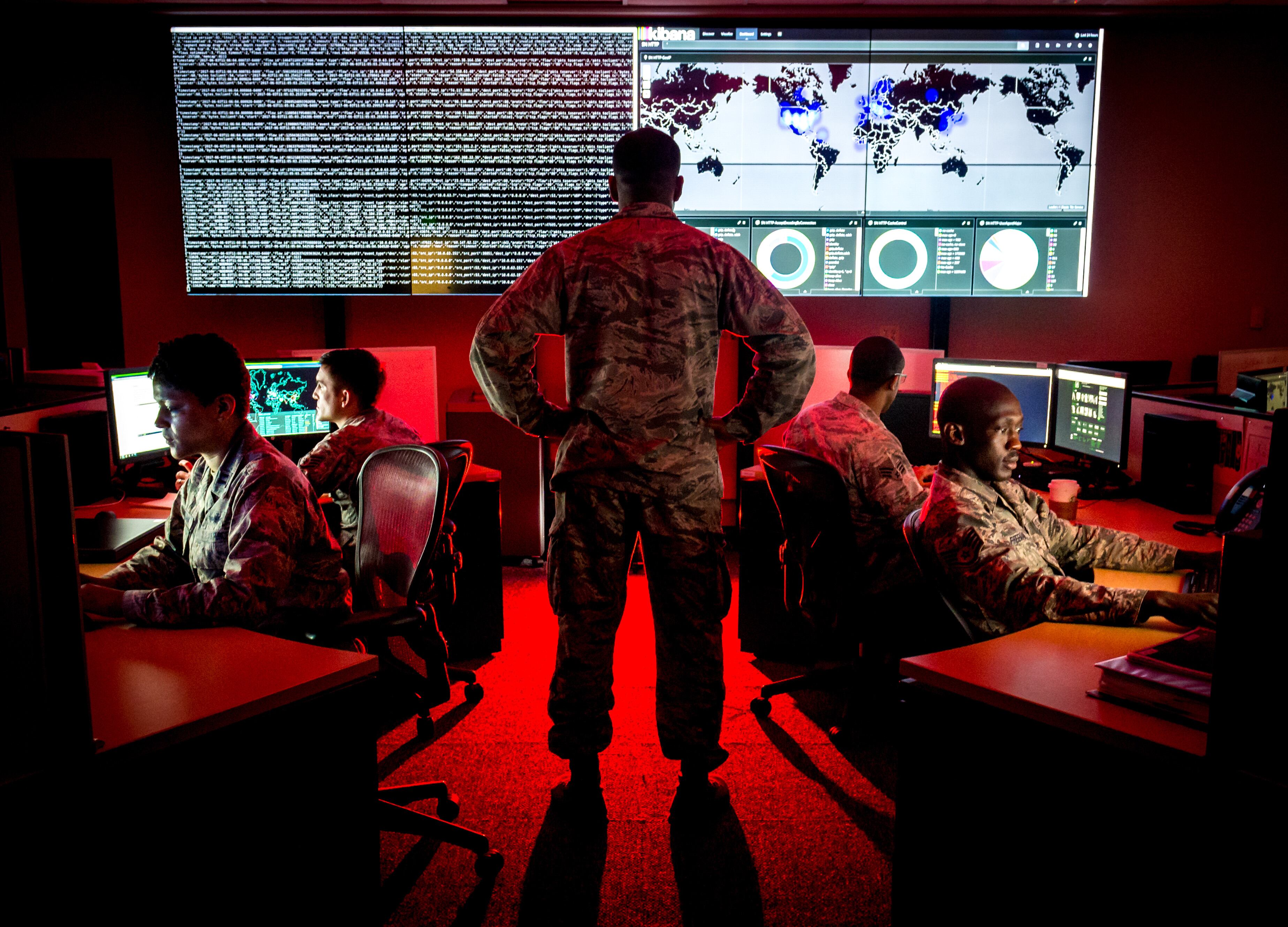For the past half century, fighter pilots have dominated high-level leadership roles in the Air Force, much as bomber pilots did during World War II and the Cold War.
But a recent study from the Rand Corp., sponsored by the Defense Department’s Office of Net Assessment, questions whether that hierarchy — with fighter pilots first, bomber pilots second and other specializations after — continues to serve the best interests of the service, especially in terms of fostering innovation.
RELATED

The preference for fighter generals continues despite the Air Force “having a greater number of nonfighter officers and a more technologically diverse set of missions,” according to the authors of the study, which was released in February.
They argue that one reason for the reliance on fighter pilots to fill leadership roles comes down to how the Air Force needs to be viewed by Congress and the Pentagon during political bargaining and budget battles: as a warfighting force on par with the other services.
However, the nature of warfare is changing. In a future conflict with a near-peer adversary, space and cyberspace, networks and unmanned aircraft will all play a major role. And the different branches of the armed forces will have to function as one team as never before.
If innovation is the key to retaining superiority, is it time for the Air Force’s so-called “fighter jock culture” to change as well? It depends on who you ask.
Air Force Times spoke with roughly a dozen current and former Air Force officers about the dominance of fighter pilots in the Air Force, why that hierarchy exists and whether it is best-suited to meet the challenges that lie ahead. They included pilots, intelligence analysts and other career fields and ranged from lieutenant colonel to general. Several wished to remain anonymous, but offered their professional observations based on decades of service.
Not everyone buys the premise that the leadership hierarchy is an issue.
“Personally, I think the Rand study missed the boat and they took the easy road going for the ‘fighter pilots run everything’ dog whistle,” a recently retired colonel, who flew MQ-9 Reaper and MQ-1 Predator drones, KC-10 tankers and F-15 fighters, told Air Force Times.
Each Air Force officer comes from a particular “silo,” he noted.

“If one silo had to be in charge, I’d absolutely go with the fighter guys,” the colonel said. “Among all of the silos, they are the most ‘joint’ and most aware of our bigger role in the DoD fight.”
Many of those interviewed agree that a hierarchy does exist within the Air Force, with fighter pilots dominating the command structure, but they pointed to a number of reasons why that is so.
Fighter jets are a coveted airframe in pilot training, some noted, with the best of the class opting to fly the best, most advanced airframes in the fleet.
Others suggested that structural differences in how and when officers in different career tracks are slotted for joint assignments could explain why fighter pilots end up in more command positions.
But fighter pilot dominance is not permanent, several officers said. As the service becomes more diversified, more cyber, space and drone pilots, among other careers, will rise to the top. The Air Force of 2050 will undoubtedly be more diverse and technically savvy than ever before.
Air wars are changing
While fighter pilots are likely to dominate top leadership posts for the foreseeable future, the changing nature of warfare would indicate that those days are numbered.
A new, congressionally mandated study of the Air Force’s future requirements, carried out by the Center for Strategic and Budgetary Assessments, devotes attention to the need for more stealthy unmanned aircraft.
Near-peer competitors like Russia and China will present a “highly contested” environment characterized by mobile, overlapping and interconnected surface-to-air missile systems that use passive sensors and other methods to avoid detection.
“The lethality, range and geographic dispersion of these systems, combined with modern fighters, electronic warfare aircraft, cyber attacks and other threats, create an all-aspect, multi-domain challenge for U.S. aircraft,” it said.

“The reality of our Air Force is we’re going to be both manned and unmanned,” Air Force Chief of Staff Gen. Dave Goldfein told Air Force Times. “It’s part of the fabric of our Air Force now.”
The shifting composition of the force all but guarantees that more officers in non-fighter pilot roles will work their way up to top leadership positions.
Slotting for joint duties
One suggested reason for fighter dominance is the career-field’s tendency to produce more experienced joint leaders.
But other pilots do attain significant joint experience as well, said retired Gen. Carlton Everhart II, who retired last year as head of Air Mobility Command.
However, he said, it’s when an officer leaves the cockpit and pursues joint duty assignments that may be the ultimate funnel in determining his or her career trajectory.
Everhart said air mobility pilots have reported to him that they start getting joint experience when they are majors, earlier than fighter pilots typically do.
That may sound like a good thing, but because they start earlier, they experience a crowding phenomenon as they move up the ranks.
Fighter pilots dwell in the operational world a little bit longer, until O-5 or O-6, and are prioritized for joint assignments at that point, he said.
“The Air Force does a great job of placing its folks in joint experiences,” Everhart said. “It’s just a matter of when those positions are available and the relevancy of your experience added on to that.”
As the service — or perhaps a Space Force — adds more space-focused officers, they too will need to jump into the mix of competing for joint assignment slots.

“We don’t have enough space warriors right now because we just haven’t been developing them,” Everhart said. “And you’ve got to get them just as much joint experience as everyone else. So that has to play in, because that’s the next frontier.”
The number and importance of officers in cyber warfare, unmanned aircraft and other career fields will also demand more opportunities for joint experience, which in turn will make them more competitive for top leadership positions later in their careers.
Combat credibility
The tendency to promote fighter pilots may reflect other needs across the armed forces, and even within civilian leadership, according to a retired two-star general who served the bulk of his career in fighter aircraft.
When the secretary of defense and the president sit down with Air Force commanders and ask for options to respond to security threats around the world, it helps to talk to a leader with significant combat experience, he said.

“You’ve got to have that combat credibility,” the major general said. “It doesn’t mean that they’re more important; it means that their expertise can apply over a wider range.”
That also doesn’t mean fighter pilots are always preferred for promotion, said the two-star, who has served on multiple promotion boards.
“I’m not going to put a fighter guy in the J6 on the Joint Staff,” he said, referencing a department that manages communications and cyber warfare. “He doesn’t have the expertise, but there are very few J6 jobs.”
“I can put the fighter guy into policy. I can put him into programming. I can put him into force structure analysis. I can put him into operations. So, he’s a little more fungible because he touches all those other things.”
Fighter pilots tend to be promoted for senior leadership more than their peers in other career fields only after they’ve been taken out of their fighter role and rotated through tours in the joint community, including cyber, space and logistics.
“And we’ve done that purposely … not just because they’re fighter pilots, but because they have expertise that’s unique to the application of lethal force in combat,” the two-star said. “We are a combat arms service. We aren’t just a mobility service. We have all of those functions because it allows us to do our job, which is to defend the nation.”
But Goldfein pushed back on the notion that combat experience is a key to selection as a top general, noting that combat credibility dwindles over an officer’s service life.
“By the time you become a general officer at the senior levels, it’s been upwards of 10 years since you’ve been in your tribe,” Goldfein said.
Finding the best leaders
While experience — especially joint experience — is a crucial part of an officer’s development, does that correlate with leadership? And, by extension, do fighter pilots make the best leaders?
Not necessarily, according to the Rand report.
According to a Rand analyst with a research specialization in Air Force culture: “There is a school of thought in the Air Force that pilots are in the best position to run the service because their situational awareness and multitasking skills translate to leadership, but it’s not clear if they do.”
Goldfein says the service is working to shuffle the best leaders to the top of the stack regardless of their background. And those leaders will be defined by their vision and ability to inspire others.
RELATED

“When I’m presenting options as a joint air chief, what I happened to have flown 10 years ago is nowhere near as important as the credibility of having the best ideas going forward,” he said.
The best leaders with the best ideas take time to percolate to the top ranks.
But the Pentagon might be able to shortcut that timeline by bringing leaders into the service laterally, according to Rob Levinson, a retired Air Force intelligence officer who now works as the senior defense analyst for Bloomberg Government.
“I wouldn’t make the argument that having fighter pilots in charge has been bad for the Air Force,” Levinson said. “But I would say that leavening the leadership across the Air Force could be really good for the service.”
When a civilian tech company needs a new CEO, they can head-hunt from another company. The Pentagon can’t do that.

“Every general we have started out as a second lieutenant,” Levinson said. “Obviously for the warfighting stuff, where there’s no real civilian analogy, you’re not going to bring someone in laterally to command a fighter wing, but the other areas, like cyber and space ... these can be played with.”
Finding a competitive civilian cyber professional with significant management experience, one who is tempted to serve, but unwilling to fully sacrifice his Silicon Valley career trajectory, and bringing them in as a colonel or general could provide a work-around — although a controversial one.
“Obviously you want everyone to understand warfighting and the mission, but with all the technical expertise that is increasingly required — and so many people aren’t involved in warfighting per se — there are probably opportunities there.”
Levinson’s out-of-the-box idea represents the urgent needs of the entire U.S. military to address new domains of warfare that have opened up. Staffing the lower ranks can be easier than finding the right leaders to head new commands covering new domains.
Change on the horizon
“We are starting to see an inkling of a change,” said retired Brig. Gen. Bruce McClintock, an F-16 and A-10 pilot whose assignments included a stint as defense attaché to Russia and service as special assistant to Gen. John Hyten when he led Air Force Space Command.
Hyten, McClintock noted, was not a fighter pilot.
“If you look back at the history of Air Force Space Command, there was a long period of time where the commanders were fighter pilots,” McClintock said. “We’ve moved away from that because we’ve grown enough indigenous, operational, warfighting-minded leaders within the space community that they are starting to populate their own specialty area.”
Hyten moved on to helm Strategic Command, the Pentagon’s unified combatant command responsible for strategic deterrence, global strike and the military’s global information grid. And he has just been nominated to serve as vice chairman of the Joint Chiefs of Staff. His rise may serve as a bellwether for other Air Force cyber and space leaders.

Similarly, it will take time before second lieutenants commissioned straight into the unmanned aircraft community rise up.
“We have a culture that prioritizes technology and innovation and I offer that’s why there was a change from bomber pilots to fighter pilots,” McClintock said. “The Air Force recognized through combat experience that they couldn’t just depend on bombers to achieve the nation’s desired end states. They had to adapt to a more tactical approach.”
Today’s leaders recognize the internal conflict that exists when warfare changes.
Drones may make pilots feel insecure. Cyberspace may be a tough domain in which to scout talented airmen. And understanding the complexities and consequences of combat is an important reality to instill in leaders, especially as those who pull the trigger on the enemy do so ever more remotely.
For the current air chief, the challenges of an evolving Air Force also present opportunity.
“We’re the ‘big tent’ service,” Goldfein said. “Think about the diversity of missions that we’re responsible for: We do leaflets to nukes, and everything in between. We’re involved in every mission the joint chiefs perform.”
“There’s room in our Air Force for people who do space, who want to do cyber, who want to go fly fighters, who want to fly tankers, who want to fly RPA, who want to be involved in projecting global power.
”You know, we got room for everyone."
Kyle Rempfer was an editor and reporter who has covered combat operations, criminal cases, foreign military assistance and training accidents. Before entering journalism, Kyle served in U.S. Air Force Special Tactics and deployed in 2014 to Paktika Province, Afghanistan, and Baghdad, Iraq.




